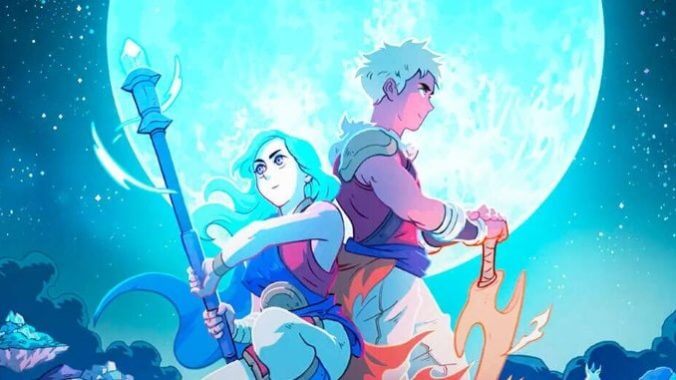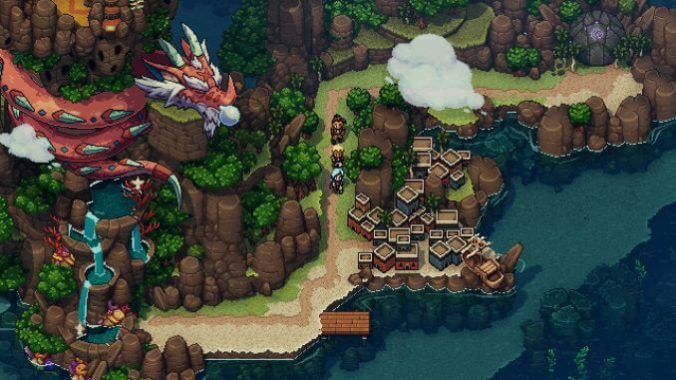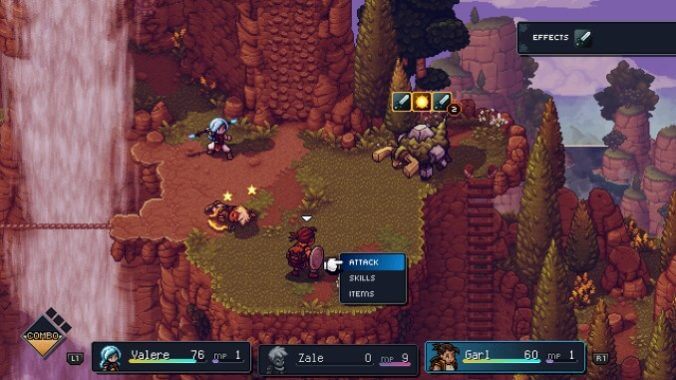Sea of Stars Mines the History of RPGs to Craft Something New

Early in Sea of Stars, your crew’s newfound lore historian tells a fireside story about a cursed pirate ship named the Vespertine. There was a mutiny aboard the Vespertine, led by its navigator against the captain before the crew and ship were caught in a never-ending tempest and then disappeared from this plane of reality. Every now and then, the Vespertine briefly appears to the naked eye, before disappearing once again. Selfishly, I heard this story and immediately thought, “I want to take that ship for myself. I want to storm its deck and take out its ghastly crew. I want to free the Vespertine from the never-ending storm that encircles and sail away with it.” Imagine my absolute delight, when hours later, my party of adventurers boarded the Vespertine and claimed it for themselves. This cuts to the heart of what I love most about Sea of Stars: it’s a rollercoaster ride through the most picturesque and fantastical journeys in the history of RPGs, becoming itself a hallmark adventure and worthy standard bearer moving forward. It isn’t perfect, but it’s the most fulfilling RPG I’ve played in a long while, as well as the rare retro-styled game whose inspirations make it soar rather than sink.
What first drew me to Sea of Stars was how tactile it looked. The earliest footage showed these two warriors, who I’d eventually learn to be Zale and Valere, lithely moving through a jungle environment. They spun in the running waters they leapt into, they vaulted over tree trunks, they jumped over small gaps between crumbling platforms. It felt like a real fantasy world I could jump into, but more importantly, it looked like Golden Sun, a distinct standout title of my childhood. Before I even knew videogame world could feel different from one another, that game set my standards high early on. Magic was real and you could see it represented in the world in how I could affect it. It’s a feeling few other games have ever managed to wrangle in my life, but Sea of Stars does it.
Sea of Stars taps into heaps of the nostalgia for a bygone era of RPGs, conjuring and bottling this magic that made me fall in love with the genre to begin with. For me, it’s the next Golden Sun, but to others it could be the next incarnation of a Breath of Fire or Chrono Trigger. At the end of the day, this ultimately means that it’s a tale of friendship featuring an eclectic cast of playable characters (spanning the pair of Solstice warriors, an assassin and more) set in an isometric RPG with a kinetic battle system. It’s literally colorful, with wonderfully intricate pixel art that puts the biggest games’ artistic direction to shame. Its story, a humdrum coming of age blown up to world-ending proportions, is sweet, if basic. And then Sea of Stars does what its developer, Sabotage Studios, does best and zag where everyone else would zig.

Its world grows into a wonderful sprawl of oddities and uniquely feel-good and fun locales that cover the staples of the genre and then some, like the town of Lucent, where the people sit in a bar called The First Stage of Grief and joke about how they’re all going to die. Corny as it may be, you meet a pair of pirates named Klee’shae and Valtraid (as in “jack of all trades’). It peppers in humor at the expense of the genre, but with a clear admiration of it too. This high-spirited and cozy nature persists, even as the game introduces nefarious villains and their horrific minions to the proceedings. It’s aided in this effort in part by the warmth of the main cast, in particular Garl. Garl is the heart of this story, with perhaps the most fully fleshed out character arc of the whole lot (including the playable characters, much to their detriment) and personality. He’s a kind friend, a natural leader, stubbornly optimistic, a loyal ally, and a phenomenal cook. He’s the exact kind of emotional centerpiece that games like this often feature: a selfless hero and the best friend a person could ever ask for. And as predictable and tropey as that may be, I can’t help but feel it’s part of this game’s old school charm and how efficiently it ensnared me.
That comfort extends to some of the more superficial aspects of the game, like the ability to cook meals that serve as your potions, elixirs, and such. Every recipe calls for certain materials that can be found in the world, and can be prepared at campfires where a mouth-watering series of sounds and illustrations play out that had me reaching for my own plate and spoon. These campfires, where players can cook, rest and recover, save their game, or simply talk to the cast and hear stories, are a nice reprieve from the nonstop action of it all. I found myself idling in these spots more than I care to admit just because everything from the visuals to the music warmed me to my core. Considering how bountiful these campfires are throughout the game, and how generously placed they are by the team, it’s clear that the team understood how important this cozy fantasy was to preserving the game’s emotional core. It’s nice, especially at a time when it feels like most big RPGs skew darker and more serious.
